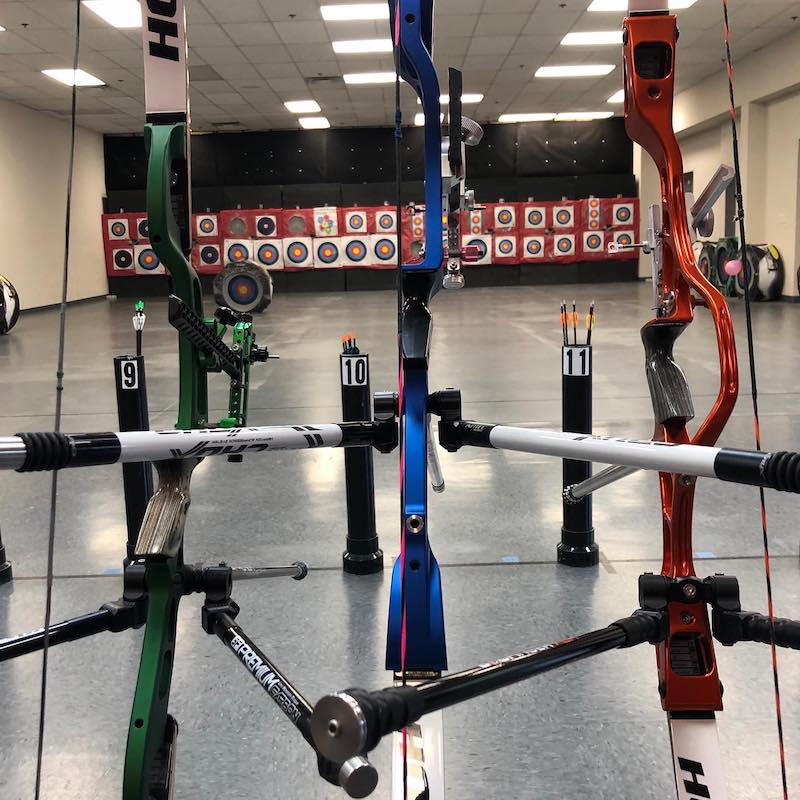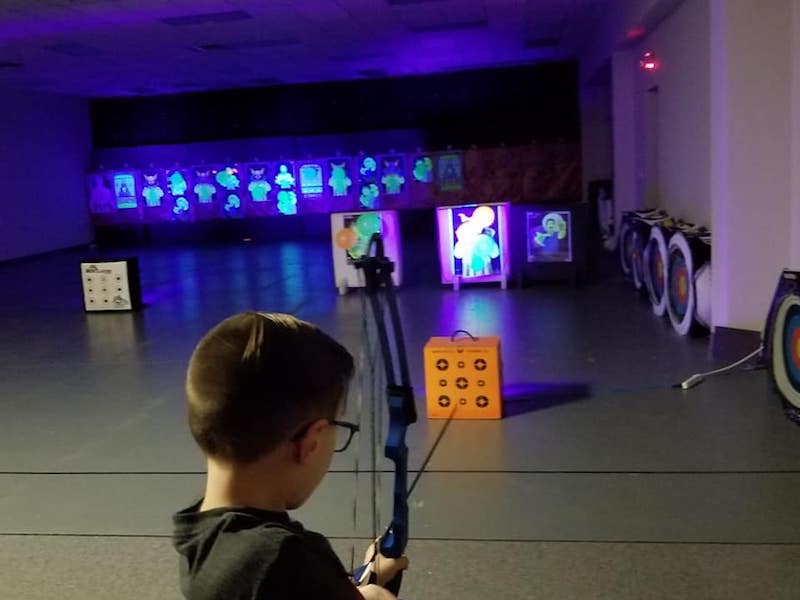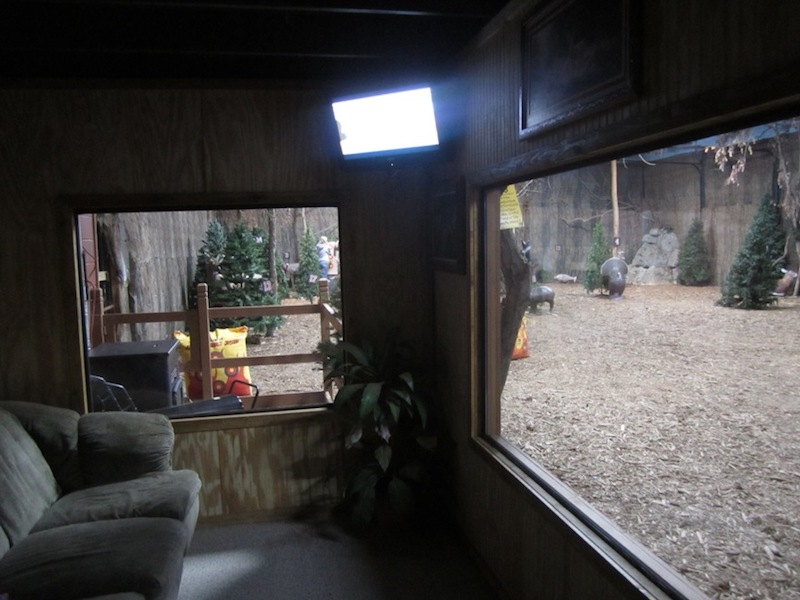Retail
What Kind of Range Should I Build?
Review these tips and insights to help decide what type of range would work best for you and your business.
Photo Credit: ATA
Archery ranges attract customers and boost equipment sales. They’re also ideal places for family, friends and community members to shoot. But building a range without research, preparation and planning can be a costly mistake.
Deciding a range’s best size and style for you and your business can be tricky. Should you build it indoors or outdoors? Should you set up a temporary range or build something permanent? Will you use 3D or paper targets, and what size? Those are just a few questions you must answer.
To help you weigh your options, we spoke with two ATA members with successful range programs. They explained what you should consider when building a range, and shared advice they’d give their younger selves if they could start over. Let’s introduce them.
Music City Archery started as a small pro shop with an eight-lane indoor range in 2014. Greer and his wife, Theresa, quickly outgrew the space, and moved from a rural to an urban setting in 2017. The new facility features 18 indoor lanes, a pro shop and retail space. They also set up an outdoor range across the street upon request.
Reider started Xtreme Archery with his father, William, in 2009. They rented a 5,000-square-foot facility, and set up a 24-target indoor 3D range. Customers shot target archery and crossbows. The Reiders upgraded to a 12,600-square-foot building in 2016, which features a 5,000-square-foot area for three ranges: an indoor 30-target, 30-yard 3D course; a six-lane, 20-yard practice range; and a combination 3D and paper-target range with four lanes for shooting rental equipment. They also rent the third range for parties or group events. The Reiders divided their range to cater to archery’s varied disciplines. They dedicate most of the remaining space to their pro shop.
What factors go into such decisions?

Do you have the space for a large range? Should you do multiple smaller ranges? Analyze your space. Photo Credit: Music City Archery
1. Space/Size
Analyze what you currently own. Do you have space to add a range, or can you rearrange your layout to accommodate shooting lanes? If you lack indoor opportunities, can you expand outdoors? Can you build a range beside or near your building? If you lack options, should you move?
Greer recommends using what you have to attract customers who continually use your range. Starting small also lets you develop programs, build coaching or teaching skills, and determine if expanding makes sense.
Greer said many shops don’t use their range to generate income. Those are lost opportunities. “Even if you only have three lanes, those lanes should be in use at all times,” he said.
2. Cost
How much will your dream range cost? Consider targets, backdrops, lighting, rental space, equipment stands and other expenses. Land and building prices vary. Your budget must cover development and staffing once the range is complete.
Reider advocates starting small, mainly to save money. He said they started in a smaller facility to avoid big utility bills. They also didn’t know how many customers they’d have. “I was told never to start too big by borrowing a lot of money you might not be able to pay back,” he said.
They upgraded to a larger indoor space to accommodate crowds and events, but Reider said it’s expensive when business slows in spring. Meanwhile, the bills never stop. They sometimes pay their electric bills from a reserve account.
3. Location
Will you put your range indoors or outdoors? Are you in a rural or urban location? You must consider weather and your potential customers. Xtreme Archery built three indoor ranges for year-round use.
“Archers can’t shoot outside in winter,” Reider said. “A larger indoor shooting facility that’s climate-controlled gives archers somewhere nice to go and practice.”
Xtreme Archery offers winter leagues, weeknight shoots and other fun events to increase participation during otherwise slow times. Greer, likewise, offers indoor and outdoor ranges, but thinks indoor ranges are better. Most important, however, is location.
“Since we moved (to an urban site), we increased our traffic three-fold,” Greer said. “It costs more to be here, but there’s a higher population so we get more traffic. Had I stayed in the rural area, we would’ve had to focus on drawing people in. It would have been less expensive, but more work.”
Greer said the move better served his customers because most of them were city dwellers. He recommends building where customers live, rather than expecting them to drive to you.

What do your customers like? What can you offer that other shops don't? Photo Credit: Music City Archery
4. Your Customers and Competitors
Greer said it’s essential to understand who your customers are and what they want, which dictates the best range type.
Reider said you can also adapt your range to specific audiences. “If you’re in a demographic area with many families with children, find ways to incorporate birthday events or fun types of shooting (i.e., balloon or holiday shoots) to attract parents and youths,” he said. “If you’re in a small town with an older demographic, adapting your range to accommodate crossbow shooters and compound shooters might be more suitable.”
Another consideration is your competition. If your town already has two outdoor ranges, consider something different. Study the area to identify potential customers and competing businesses before creating your floorplan.
All those factors overlap. Thorough research should determine your range’s market. Then review your finances to decide your facility’s size and design. You can always start small and expand your range or move to a bigger building as business increases.
– Determine Your Goal: Greer challenges retailers to decide who they want to be. That answer determines what kind of range to build.
“Do you want to be a hunting shop that supports hunters and 3D shooters?” he said. “Do you want to want to be in an urban setting that caters to the general public, and recreational or competitive archery? That determines who you’re trying to pull into your shop.”
– Adjust Your Mindset: If you want your range to generate money, Greer said you must shift your mindset from retailing to coaching. But you’ll still need knowledge and manpower to support both.
“Some shop owners don’t care about teaching and coaching,” Greer said. “If you have that facility and you want to be successful with it, you have to coach. Developing archers is really important.”
– Rent Equipment: Reider said many parents hesitate to buy equipment for their children. After all, children can lose interest after completing archery classes. Xtreme Archery rents equipment, which has been a great business add-on. Reider said rental equipment boosts interest in archery, which helps parents and participants decide whether to buy equipment.

WE ARE HERE TO HELP THE INDUSTRY, TO HELP INDIVIDUAL BUSINESSES GET THE MOST OUT OF THE INDUSTRY, AND TO HELP YOU.

Give patrons an area to sit and watch people shoot. Friends, family, and potential archers can all observe from a comfortable distance. Photo Credit: Xtreme Archery
– Provide Spectator Space: If you plan to host events or open your range to children, include a waiting area for parents and spectators. Greer wishes he had more spectating space because the range gets crowded during events.
Xtreme Archery built a porch and viewing cabin at its first range so spectators could sit and watch. Reider said the space wasn’t big, but provided nice accommodations for spectators.
— Use the ATA’s Archery Park Guides: Music City Archery is featured in the ATA’s Archery Range Guide for Retailers. The guide wasn’t available when Greer built his range, but he considers it a valuable resource for ATA members.
“When we started we had no idea what to do, and we didn’t have anything to reference,” Greer said. “Had I had some of that information, I would have done some things differently. [The retailer guide] provides insightful options. It also gets people to think about what they need to prepare, and the things they need to succeed.”
To download the guide, log into your MyATA member dashboard and click “Download Free ATA Resources.” Then click “Education Resources” from the drop-down tab and download the “Archery Range Guide: Retail Edition” document.
If you’re ready to create or expand a range or program and you need financial help, apply for an ATA Archery Range and Program Grant. Any person, company, organization or state agency is eligible. You do not need to be an ATA member to apply, but recipients must be ATA members throughout the award’s funding period.
Applicants can request any amount, but funding is based on availability, and determined by the ATA’s Archery Range and Program Grant committee. The committee grants payments to one or multiple entities. Recipients can also receive partial funding.
Click here to complete the application and upload documents, including tax forms, business plans, and project budgets by Dec. 1. ATA members can log in using their MyATA member dashboard credentials. If you’re not a member, create a login profile to submit your documents.
To learn more about the ATA’s Archery Range and Program grant, click here.
Questions? Please contact Nicole Nash, ATA’s range and retail programs manager, at (502) 640-0944 or nicolenash@archerytrade.org.
